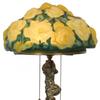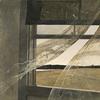Enlightened Princesses: First Exhibition to Explore the Lives and Impact of Three Royal Women on British History and Culture at Yale
- NEW HAVEN, Connecticut
- /
- January 05, 2017
This February, the Yale Center for British Art will premiere the first exhibition to explore the instrumental roles of the Hanoverian princesses Caroline of Ansbach (1683–1737), Augusta of Saxe-Gotha (1719–1772), and Charlotte of Mecklenburg-Strelitz (1744–1818)—all of whom married into the British royal family—and how they shaped the nation’s society and culture during a time of significant political and social transformation.
Organized by the Center in partnership with the UK’s Historic Royal Palaces, Enlightened Princesses: Caroline, Augusta, Charlotte, and the Shaping of the Modern World brings together nearly three hundred objects from public and private collections across Britain, Europe, and the United States. The exhibition will feature works by the artists Hans Holbein the Younger (1497–1543), Mary Delany (1700–1788), Allan Ramsay (1713–1784), Joshua Reynolds (1723–1792), George Stubbs (1724–1806), and Thomas Gainsborough (1727–1788); craftsmen and designers Anna Maria Garthwaite (1690–1763), Matthew Boulton (1728–1809), and Josiah Wedgwood (1730–1795); and architects William Kent (1685–1748) and William Chambers (1723–1796), among many others. Elaborate court costumes and jewels, musical manuscripts, botanical and anatomical illustrations, architectural drawings and garden designs, royal children’s artwork, and the princesses’ own scientific instruments will be showcased. These important works will serve to show how the princesses promoted the arts, sciences, trade, and industry, and underline their development of new models of philanthropy, especially to benefit the health of women and the welfare of children. These efforts spurred unprecedented intellectual exchange and social transformation which continues to have significance for us today. Enlightened Princesses will debut at the Center in New Haven from February 2 to April 30, 2017, and subsequently will travel to Kensington Palace in London, once home to Caroline and Charlotte, where it will be on view from June 22 to November 12, 2017.
“Caroline, Augusta, and Charlotte had sweeping intellectual, social, cultural, and political interests, which helped to shape the courts in which they lived, and
encouraged the era’s greatest philosophers, scientists, artists, and architects to develop important ideas that would guide ensuing generations,” said Amy Meyers, Director of the Yale Center for British Art and organizing curator at the Center. “The palaces and royal gardens they inhabited served as incubators for enlightened conversation and experimentation, and functioned as platforms to project the latest cultural developments to an international audience. Their innovative contributions across disciplines held great significance centuries ago and continue to inform our lives.”
The lives of Caroline, Augusta, and Charlotte straddled the eighteenth century. Caroline, the wife of the future George II, arrived in London in 1714 when the first Hanoverian king, George I, was crowned. She became queen consort after her husband succeeded his father in 1727. Augusta was married to Caroline’s eldest son, Frederick Prince of Wales, but never became queen as her husband died young. However, as mother of the next king, George III, Augusta became crucial to shaping his reign. In 1761, George III married Charlotte, who died in 1818, two years before her husband.
“Until this point, the contributions of these three princesses have been little understood, and it is the aim of this exhibition to demonstrate how they influenced the interests of their era in the most vibrant of ways. In their engagement and support of many important projects and initiatives, they provided a blueprint for the royal women who followed them—right up to the present. For this, it is our intention to bring to the princesses the attention they deserve,” said Joanna Marschner, Senior Curator at Historic Royal Palaces and lead curator of the exhibition.
In addition to masterpieces from the Yale Center for British Art and Historic Royal Palaces, Enlightened Princesses will present works from nearly fifty esteemed collections, including the Royal Collection Trust; Royal Society; Royal Botanic Gardens, Kew, Richmond; British Museum; National Portrait Gallery, London; British Library; Victoria and Albert Museum; Science Museum, London; Winterthur Museum, Garden and Library; Hunterian Museum and Art Gallery, University of Glasgow; Metropolitan Museum of Art; Smithsonian Institution, Washington, DC; Beinecke Rare Book & Manuscript Library; and Yale University. The display will also feature a new work created by the artist Yinka Shonibare MBE (RA) (b. 1962) specifically for this exhibition, which has been inspired by a meeting, in 1753, between Princess Augusta and Mrs. Eliza Lucas Pinckney, the owner of a slave plantation in South Carolina, which was then a British colony. A letter written by Mrs. Pinckney to a friend, detailing the encounter, will be included in the exhibition as a special loan from the collection of The National Society of The Colonial Dames of America in the State of South Carolina. The dress worn by Mrs. Pinckney on the occasion, made of silk produced on her plantation, will also be on display, courtesy of the Smithsonian’s National Museum of American History.









100x100_c.jpg)




